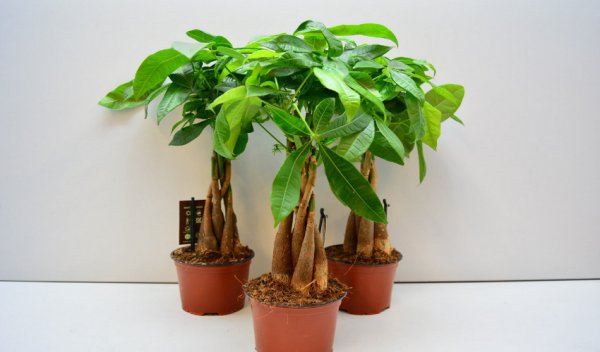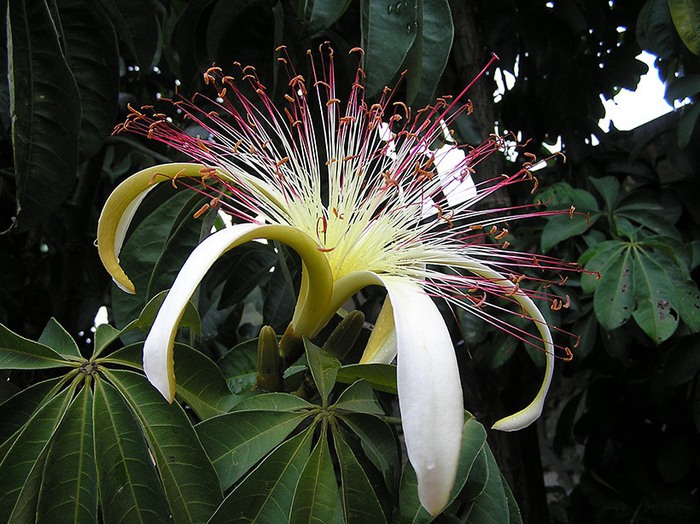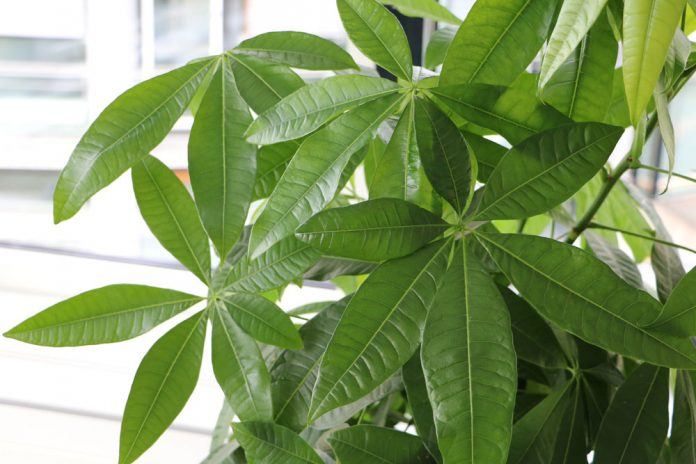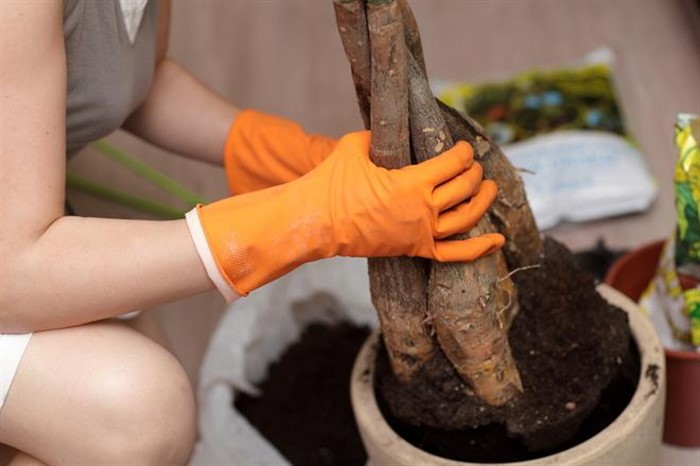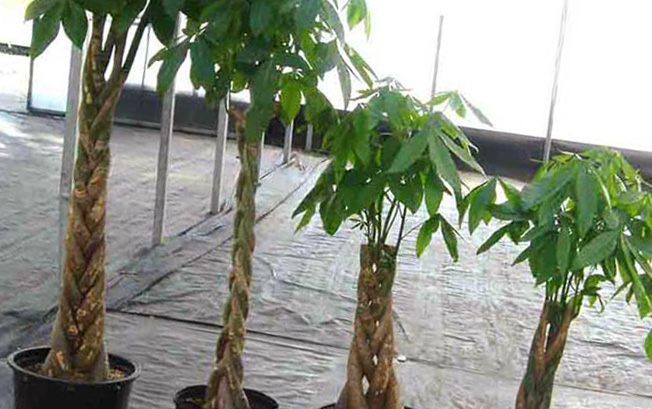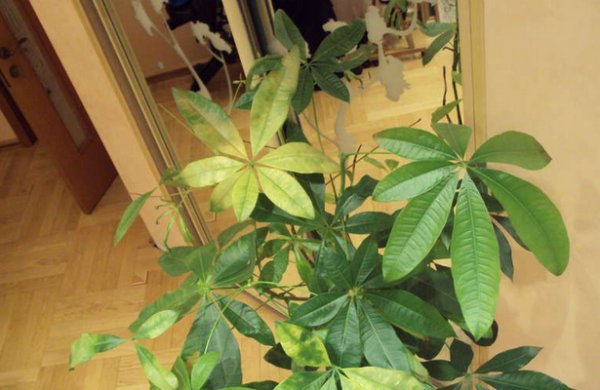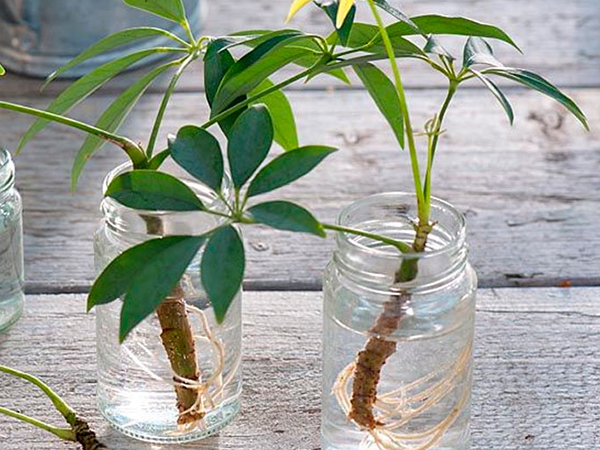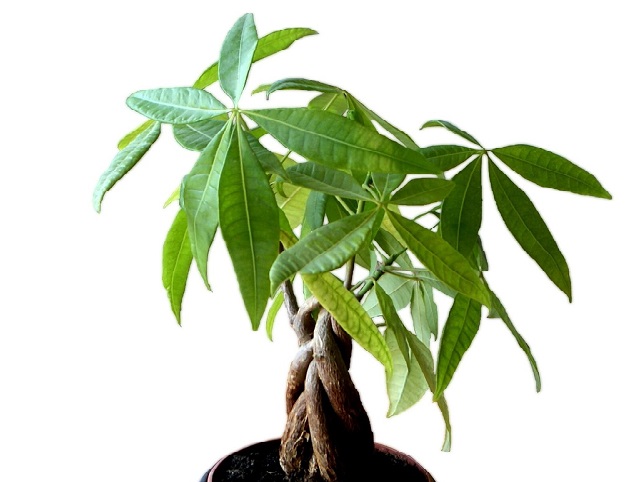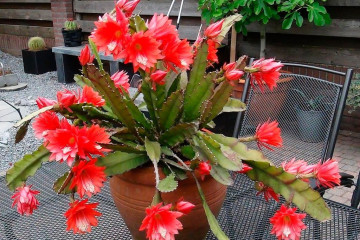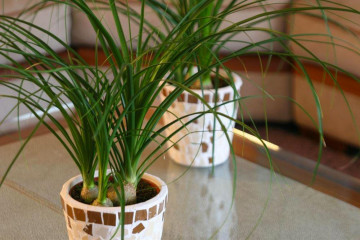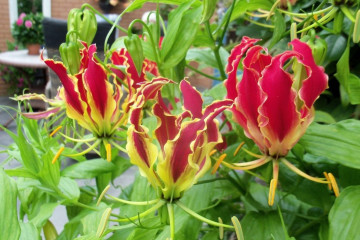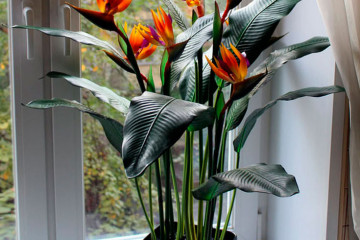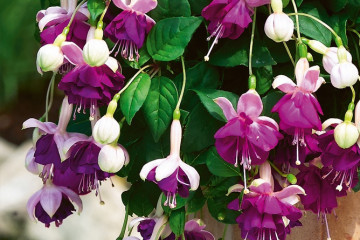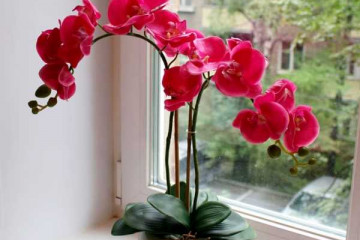Pakhira: home care and examples of popular varieties
Content:
Pachira Aquatica is a very interesting and slightly strange indoor tree of the Baobab family. Due to its ability to accumulate moisture, it belongs to succulents. Its dark leathery leaves are very similar to chestnut leaves, and the trunk is shaped like a bottle. That is why in some catalogs this plant can be found under the name "bottle tree".
If this indoor flower is provided with proper care, then water pakhira, as it is also called, can grow up to one and a half meters. Breeders appreciate the plant not only for its exotic appearance, but also for its very impressive paniculate flowers of white or light pink color, which have a delicate aroma reminiscent of vanilla. The flowering period usually begins in early spring and lasts until November. However, pakhira aquatica blooms extremely rarely at home.
Pakhira: home care
If this unusual pakhira plant appeared in the house, then you need to think about where to place it so that it feels comfortable and, albeit slowly, but still gives a stable increase. First of all, it is recommended to carry out quarantine measures: firstly, immediately transplant the plant from temporary soil into permanent one, and secondly, in order to avoid infection with pests, it is necessary to exclude the neighborhood of the tree with other indoor plants for about two weeks.
A pakhir flower at home can feel quite comfortable. How to take care of him? The opinions of flower growers on the issue of caring for pakhira were divided. Some believe that the pakhira tree is an unpretentious plant that does not require any special care, others believe that if it is not provided with special conditions of detention, it can slow down its growth for a long time, or even die altogether. In any case, pakhira aquatica will certainly appreciate care and attention and will decorate a house or apartment for a long time.
Conditions of keeping pakhira
Be that as it may, pakhira is a light-loving flower, but it must still be protected from direct sunlight. If you place pakhira on the west or east window, the flower will be quite happy. If there was no other place for the pakhira besides the southern window, then at noon it should be shaded. But the temperature at which a house tree will feel good, grow and develop normally is 22-24 ° C in summer and 16-18 ° C in winter.
Since the pakhira tree tends to accumulate moisture, excessive watering can be fatal for it. The best thing for pakhira will be to add water to the pan, from which the plant will take as much moisture as needed. However, if the soil is noticed to be dry and cracked, the flower should be watered. It is very important not to allow a long absence of moisture in the soil, otherwise the plant will shed its leaves.
Pachira transplant
Typically, the palm-like pachira requires replanting every three years.In this case, you need to choose a pot about 5 cm larger than the previous one. If the tree is young, then the transplant is carried out once a year. As a filling, choose a soil mixture suitable for dracaena and palms. Such soil differs in that it is not overloaded with nutrients and has a slightly increased acidity.
If you wish, you can make the soil for pakhira yourself. To do this, it is necessary to take sod soil and sand in equal proportions, then mix thoroughly. Since the flower has a superficial root system, it is not necessary to deepen the roots too much into the ground when planting. This will prevent the root system from rotting in the future.
So that the crown of a home tree does not lose its decorative effect, you should trim the pakhira from time to time. As a rule, this is a spring procedure. Before you start cutting off the overgrown branches, you need to make sure that the branches are strong enough and can tolerate pruning without damage.
How to braid a plant stem
Probably, many have seen how impressive the intertwined trunks of several plants look. This is not at all difficult to do. To do this, the desired number of shoots of equal length are planted in one pot at the same distance from each other. As they grow, the stems are braided or twisted in a spiral, and a common trunk is formed. The upper part of the stem is fixed with a string or a garden clamp.
Potential problems and pests
Pests, for some strange reason, are very fond of attacking this flower. Scabbard, thrips, spider mites and aphids can threaten the plant. An ordinary universal insecticide bought in a supermarket will come to the rescue. Most likely, processing will need to be done several times with an interval of 7-10 days.
Pakhira leaves turn yellow and fall off: what to do
This may be due to insufficient nutrient content in the soil. It is worth feeding with liquid fertilizer and observing the plant. The flower can also lose leaves due to too large a pot.
The leaves of the plant suddenly turn brown
Most likely, this is due to direct sunlight, which caused burns. In this case, you should immediately transfer the flower pot to the shade. And if only the tips are dry, then, most likely, the plant is in a draft.
In addition, you need to check the elasticity of the barrel from time to time. If it has become too flexible, then the reason lies in waterlogging of the soil, which caused rotting of the roots.
Reproduction
Pakhira can be propagated by cuttings and from seeds. To propagate a flower by seeds, you need to take very fresh planting material. The fact is that the seeds of this plant quickly lose their germination. Seeds should be laid out on moistened soil, lightly sprinkled on top and covered with foil, creating the effect of a greenhouse. Suitable temperature for seedlings is 35-30 ° C. It is also necessary to spray and ventilate the plant daily.
Pakhira can be propagated by cuttings. The most suitable time for this is the end of summer. The apical cutting is taken. It needs at least one leaf and one bud of growth on it.The stalk will easily take root if it is placed in a peat-sand mixture and provided with a temperature regime of 25-30 ° C.
In addition, it will be necessary to cover the sprout with a plastic cap and provide a sufficient level of humidity by regular watering or pouring water into the pan. Daily checking of a homemade greenhouse is important.
Rooting in water
You can try rooting the shoot in water. To do this, the cut apical sprout must be placed in water, after placing it in a phytohormone solution for about a day. It is not necessary to allow waterlogging of water, otherwise the lower part of the plant will simply rot. The first roots should appear after two to three weeks. Once they reach sufficient length, the cuttings need to be planted in the ground.
No matter how capricious the pakhira is, the reproduction of this flower is not a very difficult process.
In addition to the well-known aquatic pakhira, other types of this plant can be grown at home. For example, round-leaved pakhira. This species has rounded leaves and creeping long shoots, so it is usually grown in hanging baskets. Another common type of this flower is the silvery or Nurutdin pakhira. It differs from the common aquatic in the gray shade of the leaves.
Interesting Facts
In 1968 on the island. A simple Taiwan driver came up with the idea to grow several small trees in one pot, braiding their trunks in a bizarre spiral. After some time, the fashion for the pigtail tree swept all of Asia. In the East, pakhira is endowed with mystical properties that attract financial success. In Japan, this plant, tied with colored ribbons, is usually placed in factories. The Chinese believe that each blade of a five-leafed leaf means one of the elements: fire, air, water, earth and wood. Therefore, it is customary to keep this tree at home to bring harmony and peace.
More conservative Europeans enthusiastically form wonderful bonsai from this representative of the Baobabs, competing in weaving bizarre trunks.
Thus, it is a universal flower that not only pleases the eye with its unusual appearance, but also benefits according to world beliefs. It is not difficult to grow it, the main thing is to adhere to the elementary rules described above.
